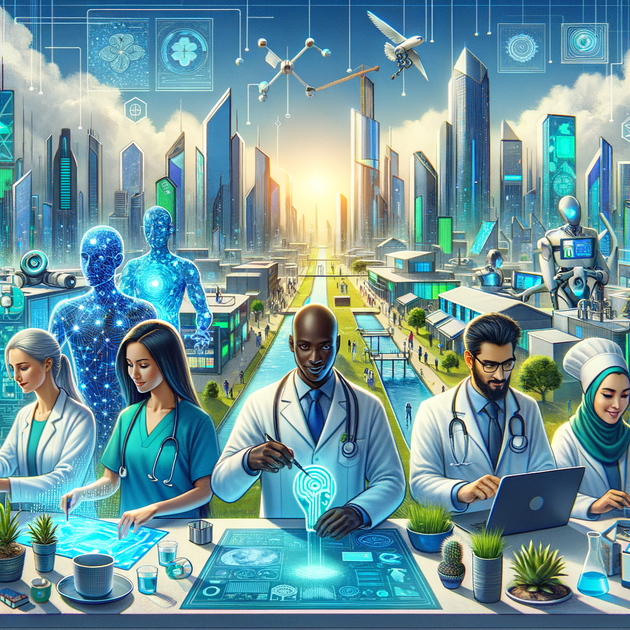Thriving Together: The Symbiosis of Humans and AI

Imagine a world where humans and artificial intelligence (AI) complement each other’s strengths, creating a harmonious partnership that drives innovation and progress.
This vision of collaboration is not just a distant dream; it’s rapidly becoming our reality. As AI continues to advance, the question isn’t whether humans and AI can coexist, but how we can shape this coexistence to maximize benefits for society. Let’s delve into how this dynamic unfolds and what it entails for our future.
Collaboration and Enhancement: A Powerful Synergy
Complementary Abilities
AI and humans possess distinct but complementary skills: AI excels at processing vast quantities of data with speed and precision, whereas humans bring creativity, empathy, and ethical judgment to the table. This powerful synergy can lead to groundbreaking advancements in various fields.
Augmentation
AI technologies don’t replace human abilities; instead, they augment them. From personalized education platforms to sophisticated financial tools, AI can tailor experiences to individual needs, helping humans achieve more than they ever could alone.
Economic and Social Impacts: Navigating the Transformation
Job Transformation
The rise of AI will inevitably reshape the job market. While some roles will be automated, new opportunities will emerge, especially in AI oversight, ethical governance, and innovative tech development.
Social Benefits
AI holds immense potential to tackle complex societal challenges. From improving healthcare accessibility to aiding in climate change mitigation, the applications are vast and impactful.
Ethical and Governance Considerations: Setting the Framework
Ethical AI Use
Ensuring the ethical use of AI involves transparency, fairness, and privacy. This requires ongoing dialogue among technologists, policymakers, and the public.
Global Governance
International cooperation is essential to manage risks and share the benefits of AI technologies. Developing norms and agreements will help navigate this complex landscape.
Challenges and Risks: Addressing the Concerns
Bias and Discrimination
AI systems can inadvertently perpetuate biases present in their training data. Ensuring fairness and inclusivity in AI development is critical.
Security Risks
AI technologies, while powerful, are not immune to vulnerabilities. The potential misuse of AI, such as through hacking or the creation of deepfakes, highlights the need for robust security measures.
What Should Humans Who Lose Income Due to AI Do?
The transition towards an AI-driven economy does pose significant challenges, especially for those whose jobs are susceptible to automation. Here are strategies for individuals to stay resilient and adaptable:
1. Reskilling and Upskilling
- Invest in Education: Embrace lifelong learning by acquiring in-demand skills through formal education or online courses, especially in areas less likely to be automated.
- Tech Literacy: Gain a basic understanding of AI and technology, as this knowledge can be beneficial across various sectors.
2. Career Transition
- Identify Growth Industries: Focus on roles in sectors poised for growth due to AI advancements, such as healthcare and renewable energy.
- Leverage Transferable Skills: Identify and adapt skills that are valuable across different fields, such as problem-solving and project management.
3. Entrepreneurship
- Innovate: Seize the opportunity to start a new business, leveraging AI and technology to create unique solutions.
- Consultancy: Offer consulting services based on extensive experience, helping companies transition to automation smoothly.
4. Advocacy and Support
- Engage with Policymakers: Advocate for policies that support workers, such as retraining programs and transitional financial support.
- Community Support: Join or form support groups for mutual assistance, networking, and resource sharing during professional transitions.
5. Mindset and Adaptability
- Adaptive Mindset: Embrace change and view challenges as opportunities for personal growth and development.
- Flexibility: Be open to relocating or changing industries to adapt to the evolving job market.
6. Financial Planning
- Savings and Investments: Build a financial safety net to navigate periods of uncertainty. Diversify income sources to reduce reliance on a single job.
